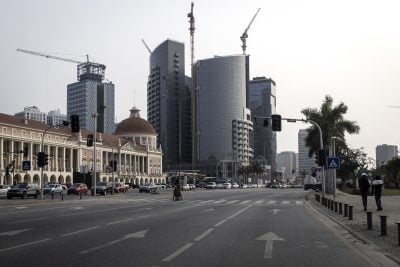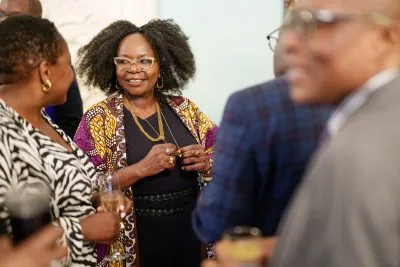Elsewedy Electric operates in five sectors: industry; construction; technology; investment; and development. CEO and President Ahmed Elsewedy talks about his company’s plans in Africa and beyond.
Elsewedy Electric in Egypt
What have government reforms done to encourage the private sector to invest in energy projects?
Ongoing reforms involving regulatory framework and subsidies have created opportunities for the private sector following the end of the government monopoly on the electricity.
There are many investment opportunities in the electricity and renewable energy sector, and the government is working to provide incentives to attract private investors. For example, GOE has several mechanisms, including a feed-in tariff system for solar photovoltaic and wind projects of less than 50MW, and a competitive bidding scheme for build-own-operate contracts, as well as independent power producer systems.
There are also investment schemes that cover key challenges facing the private sector, such as land allocation contracts, taxes and tariffs, subsidies and investment programmes.
With the development of new cities in the country and new industrial zones, what opportunities are there for your company?
Progress on the government’s ambitious plans to establish new cities and industrial zones is steady, and is reinforced by a productive investment framework. The availability of energy sources – especially electricity and renewable energy – is positioning Egypt as an attractive destination for industrial investors
The above, coupled with Elsewedy Electric Industrial Development’s (EID) successful business model, positions us as a market leader when it comes to developing and maintaining integrated industrial cities and zones. EID has the largest industrial land bank in Egypt, with more than 25m sqm across the country. Around 70% of our total land bank has already been sold – a clear indication of the competitive offering available at EID.
What is the energy outlook for Egypt considering it wants to start exporting energy in the next five years or so?
Egypt intends to supply 20% of generated electricity from renewable sources by 2022 – 12% from wind, 5.8% from hydropower and 2.2 % from solar.
It plays a key role in regional and global energy markets because of its geographical proximity at the crossroads of international trade.
Thus, Egypt can be the main feeding market for electricity to surrounding countries in the Gulf and Africa. There are active projects to supply electricity to these countries, such as the interconnection between Egypt and Saudi Arabia, which is expected to be partially operational in 2019, as well as a Sudan-Egypt interconnection project that will help other African and Nile Basin countries fulfil their electricity needs.
Has power generation increased [in Egypt] over the past few years?
Egypt has seen an outstanding improvement in electricity generation over the past five years, where the installed capacity reached 45.86GW in 2017, compared with 31GW in 2013. And the generation capacity reached 189.5TWH in 2017
It supports the all-out vision for integration among African countries in power linkage and other energy-related fields. It is also working to be the main regional supplier of electricity, whether through direct investment or regional interconnection lines.
The mini-grids and stand-alone off-grid systems will play a major role in supplying rural parts of Africa that don’t have access to electricity through national grids.
Elsewedy Electric and Africa
You signed an agreement to borrow $500m from Afreximbank. What are the plans for this loan?
Many countries have resorted to the World Bank Scaling Solar programme to initiate the renewable energy sector. This provides comfort to investors and lenders that the process is conducted under international corporate governance schemes in a transparent process, mitigating any future risks and guaranteeing the social impact for countries’ residents.
Is access to capital an issue in the power sector and for private companies in general?
The most important hurdle to address in sub-Saharan Africa is the connectivity to the grid. It is still difficult for the private sector to own and operate such networks.
Governments should invest in the transmission and distribution infrastructure that would allow private-sector investments in power generation assets (renewable or conventional).
How do we accelerate investment?
Provisions for the availability of foreign currency payments is essential to secure the most competitive tariffs. Using developmental financing from DFIs would reduce the cost of funding and result in lower energy costs.
It is important to ensure that the tariffs are sustainable in the long run to ensure they have a positive macro-economic impact on job creation and industrial growth.
What opportunities do you see across the continent?
With a population exceeding 1bn and with an estimated combined economy of $1.5tr, huge opportunities lie in wait for investors, developers and operators across the renewable energy market.
Countries where 80% or more of their population have access to electricity lie in the high- or upper-middle income economy, whereas nearly all countries with access ratios below 80% are low-income economies.
Sub-Saharan Africa is rich in energy resources, but is starved of electricity.
However, investors are cognisant of the continent’s rich endowment of energy resources. Its renewable energy resources are diverse, unevenly distributed and hold enormous potential. Solar is almost unlimited (10TW) and there are abundant hydro (350GW), wind (110GW) and geothermal energy sources (15GW).
In sub-Saharan Africa there are undiscovered, but technically recoverable, energy resources estimated at about 115.34bn barrels of oil and 21.05tr cubic metres of gas.
There is a talk of creating African champions – big companies that are able to invest regionally and take on large, transformative projects. What are your thoughts on this?
Big companies have stronger governance and sustainability goals that ensure the provision of services at affordable prices. They can have a strong impact on the livelihood of residents, and at the same time minimise the negative impacts on the environment.
However, there are also policies in place that provide a fair playing field where smaller companies can compete.
The emphasis on SMEs in developing countries has become a global trend that supports sustainable economic goals.
The way I see it, African champions should lead by example. They should set the stage for small, localised businesses to support their operations in their vast regional footprint. They should not shy away from competition; on the contrary they should always be aiming to provide the best service at the lowest price.
Want to continue reading? Subscribe today.
You've read all your free articles for this month! Subscribe now to enjoy full access to our content.
Digital Monthly
£8.00 / month
Receive full unlimited access to our articles, opinions, podcasts and more.
Digital Yearly
£70.00 / year
Our best value offer - save £26 and gain access to all of our digital content for an entire year!
 Sign in with Google
Sign in with Google 


